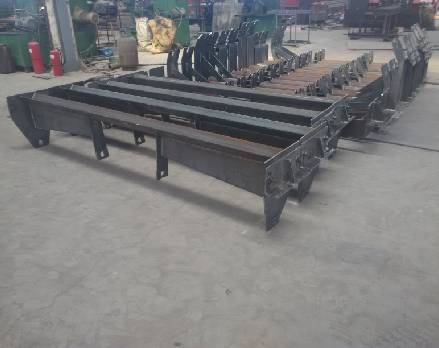 Afrikaans
Afrikaans  Albanian
Albanian  Amharic
Amharic  Arabic
Arabic  Armenian
Armenian  Azerbaijani
Azerbaijani  Basque
Basque  Belarusian
Belarusian  Bengali
Bengali  Bosnian
Bosnian  Bulgarian
Bulgarian  Catalan
Catalan  Cebuano
Cebuano  Corsican
Corsican  Croatian
Croatian  Czech
Czech  Danish
Danish  Dutch
Dutch  English
English  Esperanto
Esperanto  Estonian
Estonian  Finnish
Finnish  French
French  Frisian
Frisian  Galician
Galician  Georgian
Georgian  German
German  Greek
Greek  Gujarati
Gujarati  Haitian Creole
Haitian Creole  hausa
hausa  hawaiian
hawaiian  Hebrew
Hebrew  Hindi
Hindi  Miao
Miao  Hungarian
Hungarian  Icelandic
Icelandic  igbo
igbo  Indonesian
Indonesian  irish
irish  Italian
Italian  Japanese
Japanese  Javanese
Javanese  Kannada
Kannada  kazakh
kazakh  Khmer
Khmer  Rwandese
Rwandese  Korean
Korean  Kurdish
Kurdish  Kyrgyz
Kyrgyz  Lao
Lao  Latin
Latin  Latvian
Latvian  Lithuanian
Lithuanian  Luxembourgish
Luxembourgish  Macedonian
Macedonian  Malgashi
Malgashi  Malay
Malay  Malayalam
Malayalam  Maltese
Maltese  Maori
Maori  Marathi
Marathi  Mongolian
Mongolian  Myanmar
Myanmar  Nepali
Nepali  Norwegian
Norwegian  Norwegian
Norwegian  Occitan
Occitan  Pashto
Pashto  Persian
Persian  Polish
Polish  Portuguese
Portuguese  Punjabi
Punjabi  Romanian
Romanian  Russian
Russian  Samoan
Samoan  Scottish Gaelic
Scottish Gaelic  Serbian
Serbian  Sesotho
Sesotho  Shona
Shona  Sindhi
Sindhi  Sinhala
Sinhala  Slovak
Slovak  Slovenian
Slovenian  Somali
Somali  Spanish
Spanish  Sundanese
Sundanese  Swahili
Swahili  Swedish
Swedish  Tagalog
Tagalog  Tajik
Tajik  Tamil
Tamil  Tatar
Tatar  Telugu
Telugu  Thai
Thai  Turkish
Turkish  Turkmen
Turkmen  Ukrainian
Ukrainian  Urdu
Urdu  Uighur
Uighur  Uzbek
Uzbek  Vietnamese
Vietnamese  Welsh
Welsh  Bantu
Bantu  Yiddish
Yiddish  Yoruba
Yoruba  Zulu
Zulu conveyor roller assembly
Understanding Conveyor Roller Assembly An Essential Component in Material Handling
In today's fast-paced industrial environment, efficiency and reliability are paramount. One critical component that plays a vital role in ensuring smooth operations is the conveyor roller assembly. This essential part of conveyor systems facilitates the movement of materials, products, and goods from one point to another in a seamless manner.
A conveyor roller assembly typically consists of several key components rollers, shafts, bearings, and frames
. The rollers are cylindrical components that rotate, allowing items placed on them to move. They come in various materials, including steel, plastic, and rubber, to accommodate different load types and environmental conditions. Steel rollers are often used for heavy-duty applications, while plastic rollers are ideal for lighter loads and environments where rust or corrosion is a concern.The shafts serve as the central axis around which the rollers rotate. They are usually made of durable materials to withstand the stresses of heavy loads and constant movement. Bearings are another critical component, facilitating smooth rotation of the rollers and reducing friction, which prolongs the lifespan of the system. The frame holds all these components together, providing structural support and stability to the entire assembly.
conveyor roller assembly

One of the significant advantages of conveyor roller assemblies is their adaptability. They can be configured in various layouts—straight, curved, or inclined—to fit the specific needs of the operation. This flexibility makes them suitable for diverse applications, including manufacturing, warehousing, and distribution centers.
Regular maintenance of conveyor roller assemblies is essential to ensure their longevity and operational efficiency. Common maintenance practices include inspecting rollers for wear and tear, checking bearings for lubrication, and ensuring that all components are securely aligned. Addressing any issues promptly can prevent breakdowns, reduce downtime, and save costs associated with repairs and replacements.
Moreover, technological advancements are continually improving conveyor roller assembly design. Innovations such as modular roller systems allow for easy replacement of individual components without dismantling the entire setup. This not only streamlines maintenance but also enhances the adaptability of conveyor systems to meet changing production demands.
In conclusion, the conveyor roller assembly is a crucial element in modern material handling systems. Its design and functionality significantly influence the efficiency and productivity of various industries. By understanding its components and ensuring regular maintenance, businesses can enhance the reliability of their operations and maintain a competitive edge in the market. As industries evolve, so too will the technology behind conveyor roller assemblies, continuously driving innovations that further streamline material handling processes.
-
Revolutionizing Conveyor Reliability with Advanced Rubber Lagging PulleysNewsJul.22,2025
-
Powering Precision and Durability with Expert Manufacturers of Conveyor ComponentsNewsJul.22,2025
-
Optimizing Conveyor Systems with Advanced Conveyor AccessoriesNewsJul.22,2025
-
Maximize Conveyor Efficiency with Quality Conveyor Idler PulleysNewsJul.22,2025
-
Future-Proof Your Conveyor System with High-Performance Polyurethane RollerNewsJul.22,2025
-
Driving Efficiency Forward with Quality Idlers and RollersNewsJul.22,2025





























